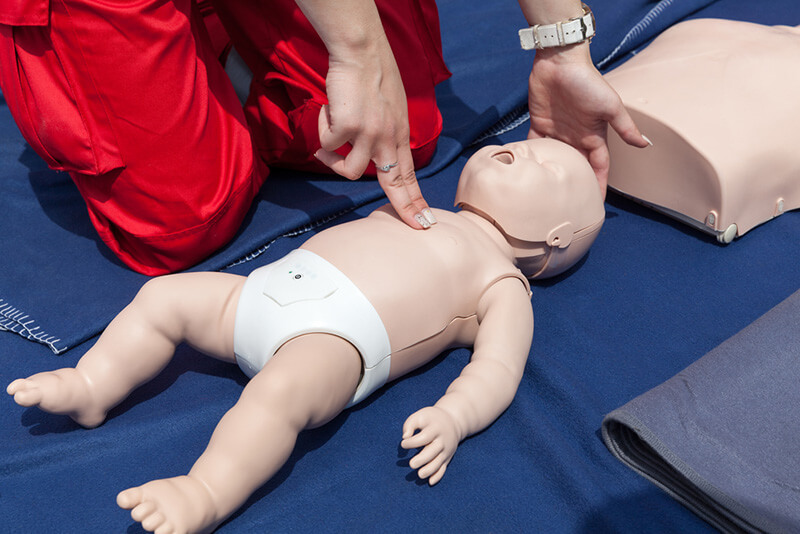In this post, we will discuss about how to perform CPR in children and how to care and treat them.
Assessing an unconscious child

Safety
The most important thing is safety, you need to remove the child from a dangerous situation before administering any treatment. If there has been a car accident for example and a child is still in the middle of a busy road or if there is a burn and the child is still exposed to the source of the heat before treating you need to remove the child from the danger so that you can treat properly.
Call for an ambulance
If you are not alone it’s best to delegate this to someone else and have them call an ambulance and explain the situation. Let the ambulance know “where you are?” “what has happened?” “The number of victims” and make sure that that person comes back to you and confirms that have done everything that you’ve instructed.
Check response
You want to assess the level of the child’s responsiveness. First, see if they respond to voice by speaking firmly with them or even shouting their name to see if they groan turn over or make any sort of movement.
If not see if they respond to pain by pinching their shoulders or rubbing their sternum here on their chest. If they are responsive to any one of these even with a groan or some sort of movement then you can move them into the help position and monitor their breathing while they’re laying down. Make sure that they are comfortable in this position and warm and treat them for a shock.
Treatment: ABC ( Airway Breathing Circulation )

Airway
While the child is laying down, kneel down beside put one hand on their forehead and the other hand on their chin tilting their head back slightly. This will open their airway.
Breathing
You want to look for breathing by looking to see if their chest is going up and down. By listening to see if you can hear any sounds of wheezing or trouble breathing. And lastly, you can put your cheek down to their mouth to see if you feel any breaths coming from their mouth or nose.
Circulation
If they are breathing proceed to check their circulation. You can do this by trying to check their pulse. You can check their jugular pulse, on their neck with two fingers or you can do a perfusion test by pinching their fingers and watching how quickly the blood replenishes if you blood replenish. If can find their pulse, Try to count how many beats per minute their heart is beating. When the emergency help arrives this will be a valuable piece of information that they can use to help treat the victim. While you are checking for the signs of circulation, You should also check their body to see if they are bleeding from anywhere or if there are any active and open wounds.
If you find any active or open wounds then stop the bleeding. Just as we discussed in the last chapter. If they are not breathing you will need to proceed to CPR if you are in a public place. You should ask someone at this point to look for an 8 or automated external. Different relator. Many public places have them, so it’s important that someone go look for it.
Here is some more very valuable information you should not ignore:
CPR for Children – By – Web MD
How to Perform Child and Baby CPR – By – Red Cross – American Red Cross
What are the Differences Between Infant, Child, and Adult CPR? – By – AED.COM
CPR Instructions For Infants and Small Children – By – Washington.edu
CPR for children over one year: in pictures



